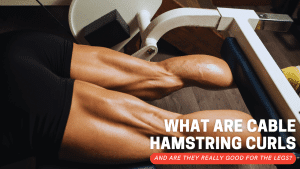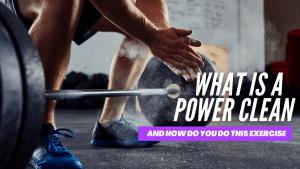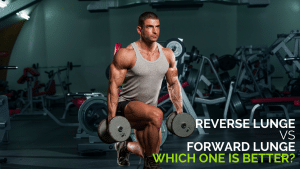What are Bulgarian split squats
and are they better than lunges?
When it comes to working out, the abs, biceps, and chest usually get most of the attention. But the legs? They don’t get as much love like these three. Why else do you think the expression “Never skip leg day” is so popular?
People seem to forget that strengthening the legs is just as important as building up your upper body strength. But since the legs are such a big muscle group, they can be tough to workout. Leg exercises can be extremely painful and exhausting, and this is probably why many people just don’t do them.
But for an overall powerful body, both the upper and lower parts should be equally strengthened. And if you want strong legs to go with your strong upper body, you need to accept the harsh reality and responsibility that comes with working out your legs.
Since we are talking about leg workouts being tough, why not start your leg routine with arguably the most notorious leg exercise ever: the Bulgarian split squat?
What is a Bulgarian split squat?
The Bulgarian split squat is the more difficult version of the single-leg squat. The exercise requires the back leg to be in an elevated position, placed on either a bench or a sturdy chair. Such position puts greater focus on the quadriceps compared to other similar compound exercises targeting the lower body.
Since the primary focus of this exercise is the front leg, the burn should be felt mainly in that area, specifically the quadriceps, since the back leg is only there to provide balance and support. Being in that kind of position makes the Bulgarian split squat more challenging than other leg exercises because it needs a great deal of balance and coordination while also recruiting the upper body muscles, particularly the core, to maintain proper form.
So what exactly is the Bulgarian split squat? It is basically the single-leg squat’s sibling from hell.
How difficult is a Bulgarian split squat?
Words will never be enough to describe how challenging the Bulgarian split squat is, so here is a step-by-step guide on how to do it so you can try the exercise and answer the question yourself.
- Begin by standing roughly two feet in front of a bench or sturdy chair, with your feet hip-width apart, your core engaged, your shoulders retracted, and your upper body pointing straight ahead.
- Lift one leg and place one foot on the bench or chair behind you. The placement of your foot can be positioned in two ways: the first option is to put the top of your foot on the bench or chair so that your ankle joint is aligned with the edge of the bench, while the second option is to flex your ankle and find your balance with the ball of your foot and your toes, just like you would in a lunge.
- Make sure that your feet are still hip-width apart. This is because your elevated foot should not be directly behind your front foot as this will make you lose your balance. Finding the most comfortable foot placement might take you a few attempts but the important thing is that you achieve the perfect position eventually.
- Brace your core with your chest out and eyes looking straight ahead then bend one knee, allowing the other knee to bend naturally as you squat without putting the load on your back leg.
- Keep the load balanced evenly across the foot that is on the ground as you squat. Hinge slightly forward at the hips, making sure that your knee remains aligned with your toes.
- Breathe in as you squat and keep lowering down until your thigh is parallel to the ground.
- Slowly bring your body upwards back to the starting position by pushing through your foot and using your quadriceps and glutes to power the standing up motion. Make sure to breathe out as you do this.
- Repeat. Do at least 2 sets of 6-8 repetitions each per side. Once you are comfortable with the form and motion, you may progress to 3 sets of 12 repetitions each per side. You may also include a light dumbbell for additional resistance.
Bulgarian split squat variations
The Bulgarian split squat has two known variations: one that targets the quadriceps and one that targets the glutes.
The placement of your foot determines which part will be more dominant. If your foot is further from the elevated surface, the exercise will work the glutes and hamstrings more, but if your foot is closer to the elevated surface, the exercise will hit the quadriceps more.
Benefits of the Bulgarian split squat
The Bulgarian split squat can both be a compound and an isolation exercise. It may sound confusing, but here’s why.
The Bulgarian split squat is a compound exercise in the sense that it works the same muscle groups that squats and lunges do: quads, glutes, hamstrings, calves, abdominals, and spinal erectors. But it is also an isolation exercise because it puts greater emphasis on the quadriceps due to the single-leg balance the movement requires. This nature of the Bulgarian split squat makes it an ideal exercise for achieving overall lower body strength.
Moreover, training your body unilaterally—meaning that you work out one side of your body independently from the other—helps improve side-to-side muscle imbalances which can make it less likely for one side of your body to take over when doing movements such as bending and lifting.
Lastly, improving your balance with the Bulgarian split squat builds your agility and core strength which makes it less likely for you to not get easily knocked off balance. For young individuals, this may not seem like an urgent concern at the moment, but the likelihood of falling will worsen with age.
The difference between Bulgarian split squats and lunges
To most people, the Bulgarian split squat might look similar to the lunge. But while their movements are seemingly the same, they are different in a few ways.
Movement
The first major difference between these two exercises is the way they are performed. The Bulgarian split squat is static, while the lunge requires you to walk or take a step forward, backward, or sideways.
Regardless of the direction in which you are moving, the lunge uses both legs equally to complete a rep, thus making both legs more active than in a Bulgarian split squat. This makes the lunge the more ideal option for people wanting to target the quadriceps, hamstrings, and glutes since the stepping motion requires a push and pull force from opposing legs to complete reps.
Meanwhile, the split squat mainly focuses on the front leg while the back leg remains at rest for the most part. The back leg is only slightly active in the sense that it is doing its job of providing stability and balance. Coaches and trainers normally advise putting 80% – 90% of the load on the front leg and let the back leg rest comfortably.
Intent
Another important difference between the Bulgarian split squat and the lunge is the muscle—or rather muscles—used in each exercise. As previously mentioned, the Bulgarian split squat and the lunge target different muscle groups based on how they are performed.
During a Bulgarian split squat, the muscles targeted are the quadriceps and glutes. While the lunge also targets the same muscles, it includes the hamstrings as well.
The lunge is a more dynamic and compound exercise that targets the entire lower body as it recruits more muscle groups all at once, while the split squat is more of an isolation exercise that heavily focuses on either the glutes or the quads, depending on your foot position.
Aside from targeting different muscle groups, the Bulgarian split squat and the lunge can also be performed in different situations based on various needs. The lunge is a good starting point for both beginners and athletes trying to do unilateral training in a variety of ways, while the Bulgarian split squat is a good way to teach unilateral movements in general.
So which one is better?
The answer is this: no one can categorically say that one exercise is more effective than the other. There is no real better option between the Bulgarian split squat and the lunge because both exercises provide a multitude of benefits.
The answer will be up to you because the best exercise for you will ultimately be determined by the goal you are trying to achieve.
If you want better balance, improved coordination, and overall leg growth, then a more compound exercise like the lunge may be better suited for you. If you want a quad or glute-specific isolation exercise, then the Bulgarian split squat might be best. If you want total lower body strength, enhanced endurance, and movement efficiency, then incorporating both exercises into your leg routine could be the way to go.
But of course, at the end of the day, improving your lower body strength needs more than one exercise, and while both the Bulgarian split squat and the lunge are great, they should not be the only leg exercises you do.



